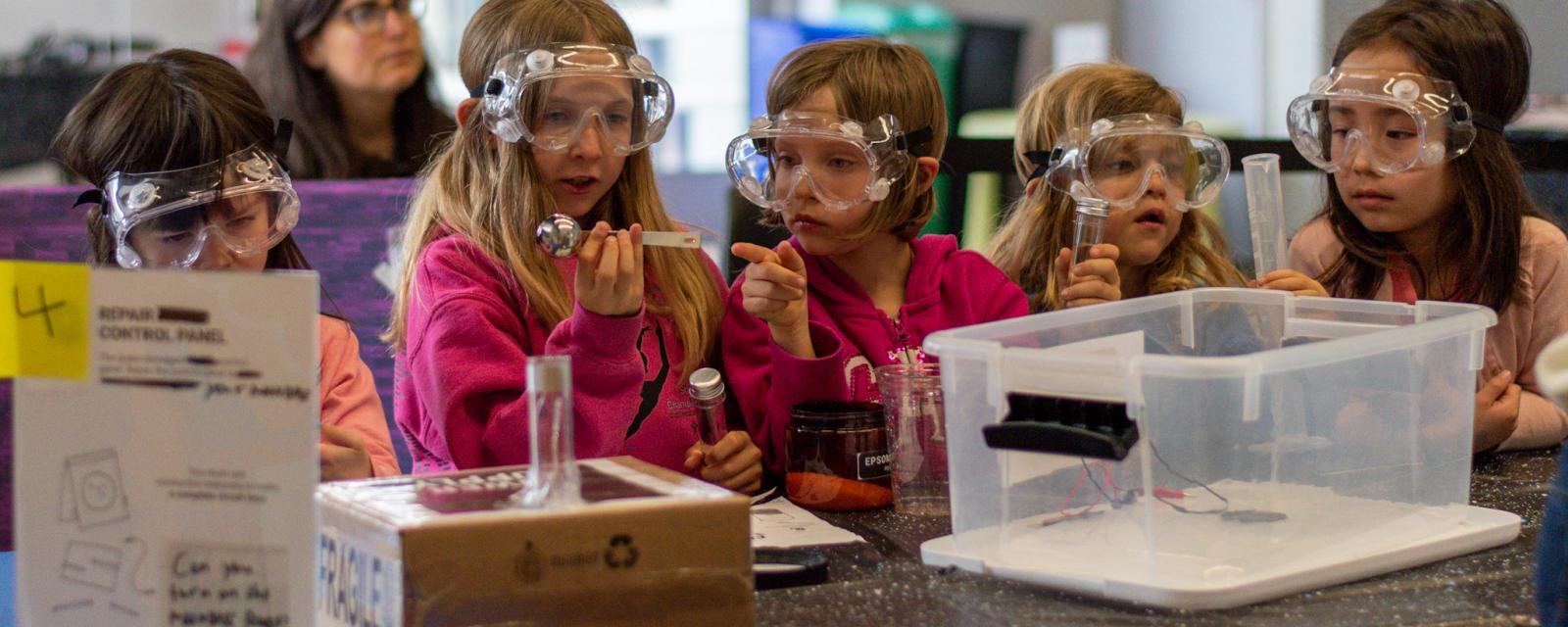
Collaborations
Collaborating with Community and Youth-Serving Organizations
Collaborating with an existing youth-serving organization on STEM activities is an effective way for museums and university outreach programs to connect with audiences they may not regularly reach, particularly underserved audiences. We have compiled profiles of national youth-serving organizations in Museum & Community Partnerships: Collaboration Guide to assist museums and university outreach programs in developing partnerships with a community organization or a local chapter of a national youth-serving organization. These profiles are intended to provide a brief introduction to each organization: 4-H, Afterschool Alliance, Boys & Girls Clubs of America (BGCA), Boy Scouts of America (BSA), Girls Inc., Girl Scouts, libraries, National Girls Collaborative Project (NGCP), Parent Teacher Association (PTA), Y (YMCA), and YWCA.
Collaborating with Community and Youth-Serving Organizations
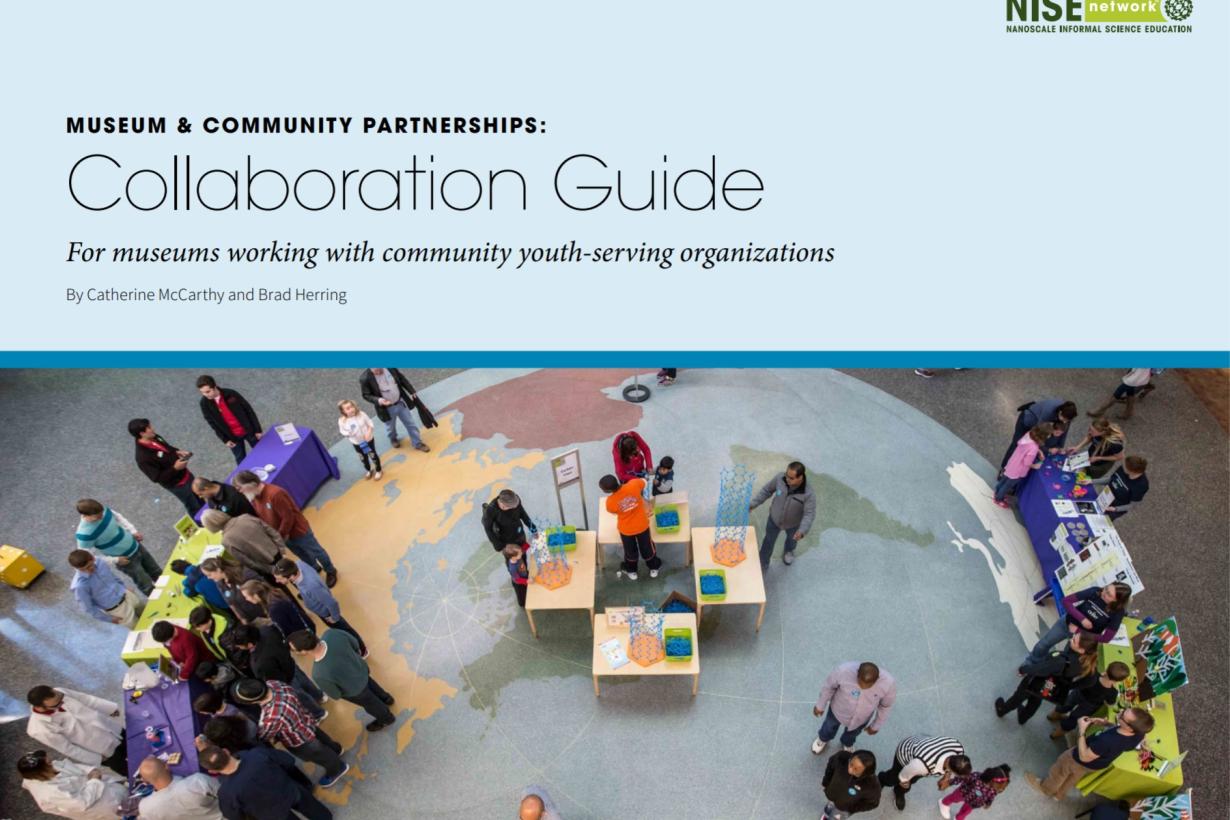
Museum & Community Partnerships: Collaboration Guide and additional resources
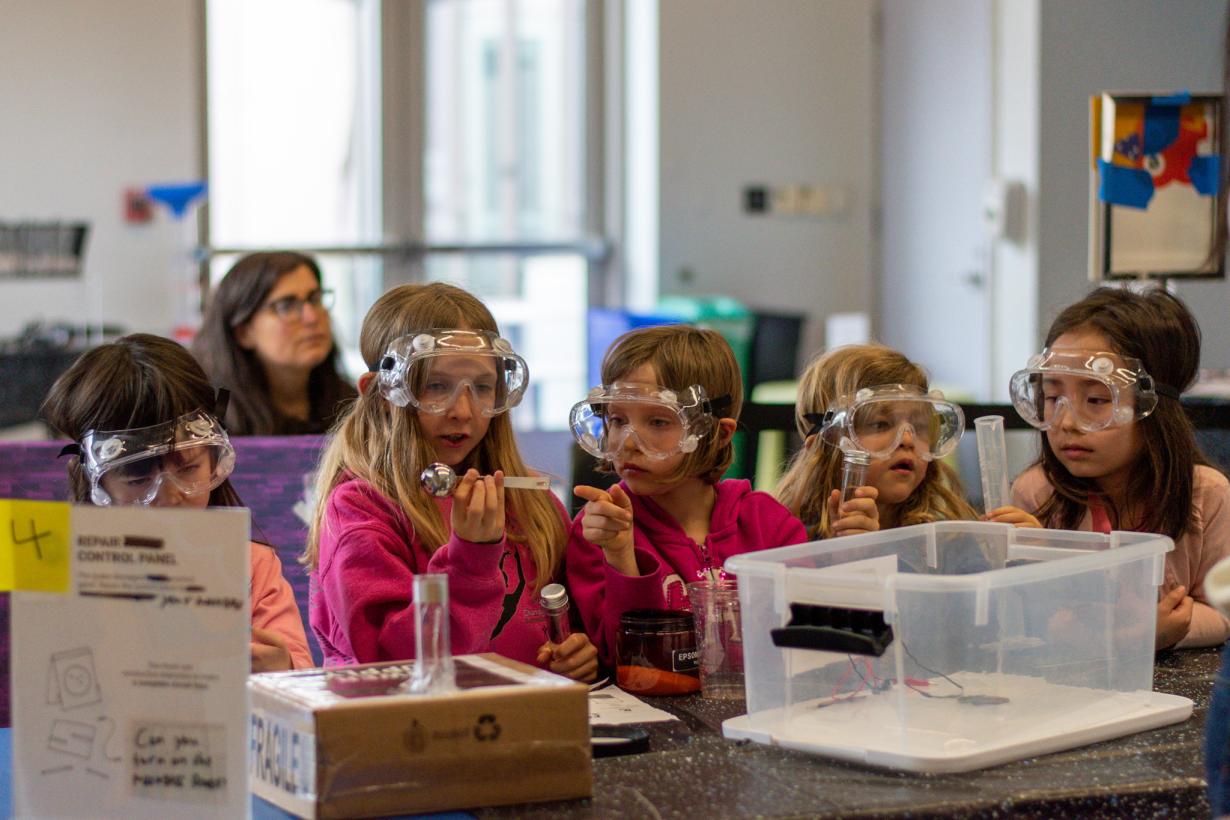
Girls in STEM
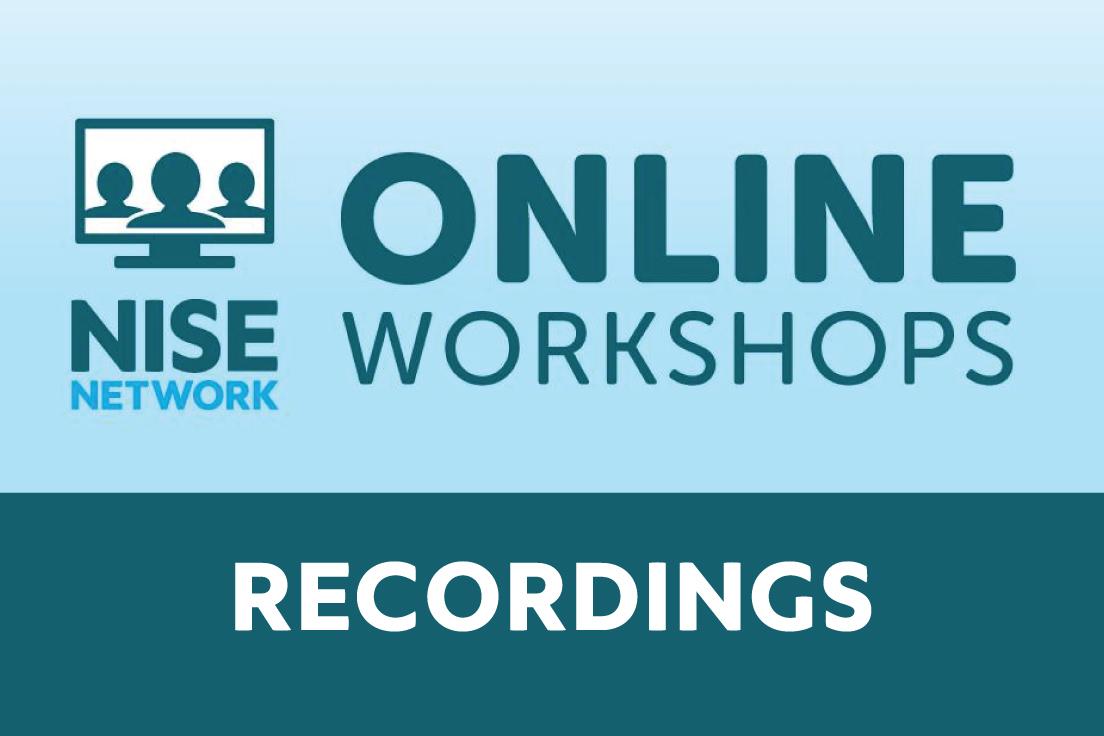
Online Workshop Recording: Museum Community Partnerships - Part 1: Libraries

Online Workshop Recording: Museum Community Partnerships - Afterschool Programs: Advocating, Collaborating and Bringing Earth and Space Content to Out-of-school Time
Collaborating with Local Scientists and Experts
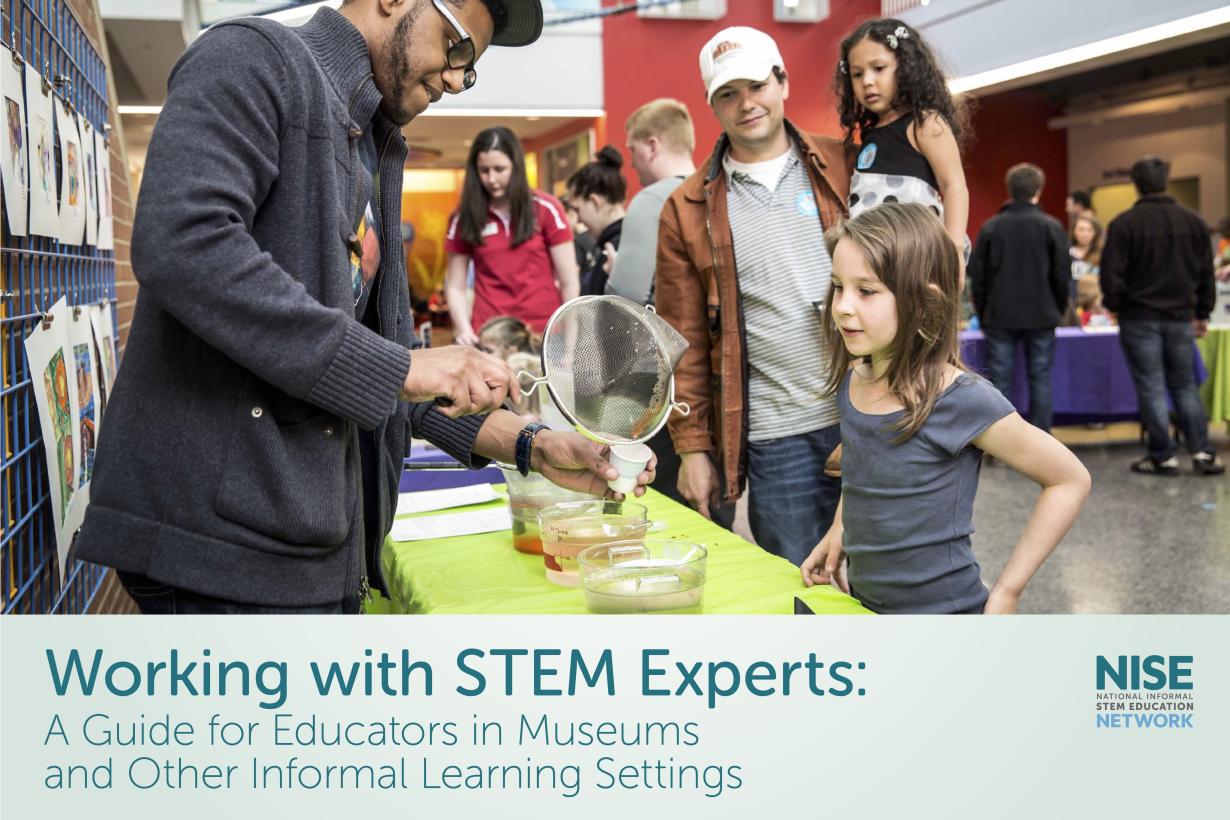
Working with STEM Experts: A Guide for Educators in Museums and Other Informal Learning Settings
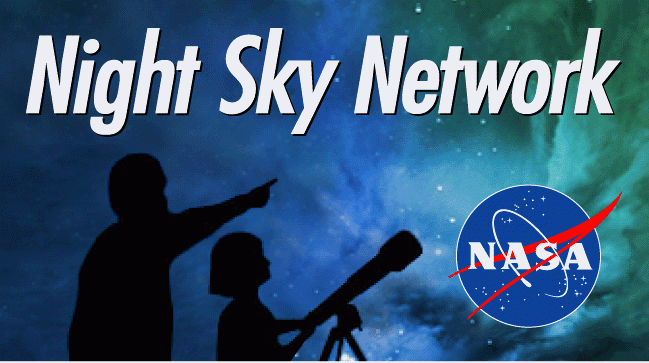
Finding astronomy volunteers: Solar System Ambassadors Program, Night Sky Network, and Astronomy Ambassadors
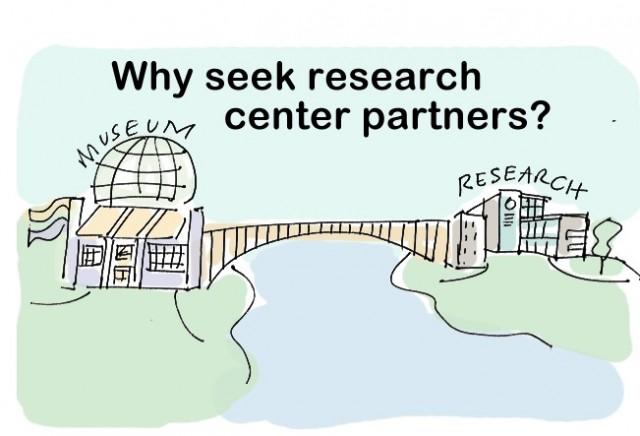
Research Center - Informal Science Education Partnerships (RISE)

Online Workshop Recording: Museum Community Partnerships - Part 3: Working with the Solar System Ambassadors and Night Sky Network
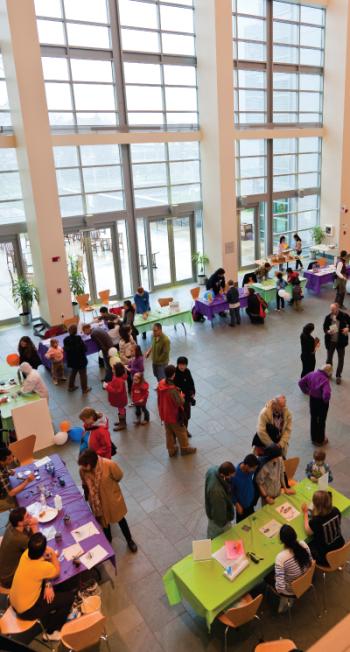
More Resources for Finding and Partnering with Local Scientists and Experts by Kit
Each kit event planning guides includes specific local partnering suggestions connected with the activities and content.
- Explore Science: Earth & Space Event Planning and Promotion Guide
- Explore Science: Let's Do Chemistry Event Planning and Promotion Guide
- Frankenstein200 Event Planning and Marketing Guide
- Building with Biology Event Planning and Marketing Guide
- Sustainability in Science Museums Planning and Promotional Guide
- Explore Science - Zoom into Nano Planning & Promotional Materials
- NanoDays Planning Guide
Partnering with Diversity Serving Professional Societies
Professional STEM societies designed to support under-represented groups are eager to foster interest in STEM careers and diversify the STEM workforce. Many of these societies have local chapters located across the United States; opportunities for collaboration on local public engagement include special events, community outreach, and mentoring programs.
- American Association of University Women www.aauw.org
- American Indian Science and Engineering Society: www.aises.org
- LGBTQ+ STEM: https://lgbtstem.wordpress.com
- National Action Council for Minorities in Engineering: www.nacme.org
- National Organization for the Professional Advancement of Black Chemists and Chemical Engineers (NOBCChE): www.nobcche.org
- National Society of Black Engineers: www.nsbe.org
- MAES - Latinos in Science and Engineering: mymaes.org
- Out in Science, Technology, Engineering, and Mathematics (oSTEM) for LGBTQ+ people in STEM: ostem.org
- Out to Innovate™, formerly known as National Organization of Gay and Lesbian Scientists and Technical Professionals (NOGLSTP): www.noglstp.org
- Society for Advancement of Chicanos and Native Americans in Science (SACNAS): sacnas.org
- Society of Asian Scientists and Engineers: www.saseconnect.org
- Society of Hispanic Professional Engineers: www.shpe.org
- Society of Women Engineering: www.swe.org
- Women in Engineering Program Advocates Network: www.wepan.org
- Women in Technology International: www.witi.com
More about Collaboration
Collaboration occurs when organizations and individuals make a commitment to work together and contribute resources and expertise to achieve a common, long-term goal. There are a many reasons to collaborate, but they can be boiled down to just a few: 1. To share resources, expertise, and connections, 2. To build upon existing strengths, and 3. To reach new audiences.
Communities face a variety of challenging and complex problems that can be addressed through collaborative public, private, and nonprofit partnerships. Many of these challenges simply cannot be addressed effectively by one organization acting alone, and require the diverse resources and expertise of government agencies, community-based organizations, state and national organizations, businesses, schools, and individuals. When surveying case studies of local communities who have successfully addressed complex problems, collaborative strategic partnerships are almost always a key ingredient in these success stories. Partnerships can ultimately improve the health and welfare of children, families, and communities.
